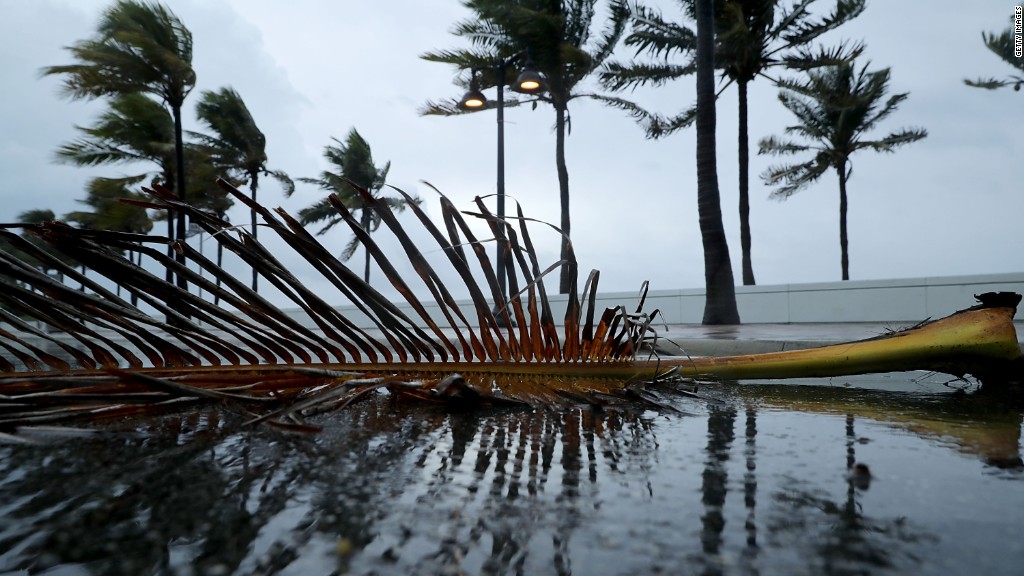
Hurricanes Harvey and Irma were a double body blow for the already troubled National Flood Insurance Program.
The insurance program, which is part of FEMA, provides the only protection against flooding that most homeowners and businesses can get. Private policies typically only cover the wind damage in a hurricane, not flood damage.
But after a series of floods caused by major storms in recent years, including Hurricane Katrina in 2005 and Sandy in 2012, the program is roughly $25 billion in debt. It has less than $2 billion cash on hand, with the authority to borrow only $6 billion more.
Experts say the claims from Harvey and Irma will run into the tens of billions. Reinsurance policies purchased by FEMA could cover about $1 billion, a small fraction of what the program will need.
Tragically for the homeowners, most homes in Harvey and Irma's paths don't have flood insurance. Still, Florida and Texas between them have nearly half the 5 million flood insurance policies written nationwide.
About 400,000 homes in the counties affected by Harvey have policies, as do about 500,000 homes in counties along the Florida Gulf Coast.
The average claim in the past 12 years has been for about $50,000, which means this storm could quickly deplete what little the cash the program has.
Enki Research, a disaster analysis company, estimated Monday evening that Harvey will result in $16 billion in claims against the flood insurance program and Irma will cost the program an additional $12 billion.
Together the two storms would top the $20.7 billion in claims from Katrina, and be more than triple the nearly $9 billion in claims from Sandy, the second biggest hit to the program until now.
And the financial strain is only going to get worse in years to come, experts say, because of climate change and more development in coastal areas.
Laura Lightbody, director of the Pew Charitable Trusts' project to reduce the impact of weather-related catastrophes, said the result will be "more people being at risk, more assets at risk and more expensive claims."
Related: How to avoid 'storm chaser' fraud after Harvey
As part of its hurricane relief package, Congress reauthorized the flood insurance program last week so it could issue policies beyond a previous deadline of Oct. 1.
But it was a short-term fix that only lasts until Dec. 8. Without another reauthorization, home sales could stall in some places because flood insurance will not be available. In flood zones, lenders typically require flood insurance.
And Congress did nothing last week to provide the program more money, or even more borrowing power. A spokesperson for the agency said that policyholders don't need to worry, but could not say where the money would come from to pay new claims.
"Congress and FEMA have never allowed a valid flood claim to go unpaid," said the spokesperson.
Until 2005, premiums collected under the program mostly covered the cost of claims. But record payments of $17.8 billion in 2005, the year of Hurricanes Katrina and Rita, put in a hole it has yet to emerge from.
Related: Lawyers urge Texas homeowners to file Harvey claim before law change
The insurance program is borrowing from the U.S. Treasury to cover its costs, which means that taxpayers could ultimately be on the hook.
Congress has tried to reform the program. It passed a bill in 2012 that would have raised premiums, but after an outcry from many of the 5 million policyholders, Congress changed the program again in 2014 to cap the increases policyholders would have to pay.
--CNNMoney's Jackie Wattles contributed to this report.


